


Established to promote the use of the traditional ridden heavy horse alongside all its other established draft uses

DRESS CODE FOR RIDERS
-
•Turnout should be natural and traditional, similar to that worn in a hunter or mountain moorland class.
-
•It is recommended that riders of heavy horses wear tweed jackets, shirt and tie.
-
•Plain long black or brown boots. (Juniors 16 and under may wear jodhpur boots.)
-
•Leather / string gloves.
-
•Hair ribbons and bows kept to a minimum.
-
•No ear rings, body studs or visible jewellery should be worn.
-
•Anyone competing on a horse must wear a hard hat - a skull cap or hat according to the current BSI or European Standard must be worn by all competitors in order to minimise risk of head injury. It is mandatory for competitors under the age of 18 to wear such skull caps or hats. Skull caps must have a navy blue, brown or black cover.
-
•Whips/canes must not exceed an overall length of 76 cms (30 inches) and if they are misused, in the opinion of the judge, the rider may be sent out of the ring.
-
•Blunt or dummy spurs may be worn. (Spurs should only be worn by riders who have attained their 16th birthday.)
-
•Riders of stallions to be aged 16 and over.
Above all riders and their grooms must, at all times, present themselves in the show ring neatly and smartly dressed.
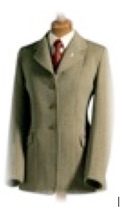
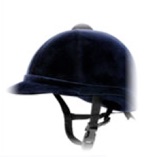
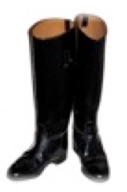
TURNOUT
TURNOUT FOR HORSES
-
•Plain or workmanlike English bridle with plain noseband and browband with a snaffle or traditional double / pelham riding bit. No bitless bridles or Liverpool bits.
-
•English saddle with plain leather or webbing girth.
-
•Numnahs (not a saddlecloth) to be discreet. No bright colours.
-
•No rugs or saddle cloths that identify the horse or owner may be worn in the ring.
-
•All ridden horses must be four years old or over.
-
•Mares with a suckling foal born during the current season are not eligible to compete in ridden classes.
-
•No Ridden horse may be shown on a leading rein.
-
•The judge may require that a horse which constitutes a danger leaves the ring; the judge’s decision is final.
-
•Stallions should display a stallion bridle marker.
-
•In ridden classes where a judge may ride, riders using small stirrup irons are requested to bring a spare set of irons and leathers of a suitable size for the judge.
-
•Bandages, boots and protective pads are not allowed.
-
•Shoeing should be of a traditional nature and indicative of the nature of its use. If bevel shoes are worn screw in studs must be fitted.
-
•Tail plait and wool and flights optional but for Health & Safety reasons no standing wired flights.
-
•A fall of horse or rider in any class will result in disqualification. The rider must not remount in the ring.
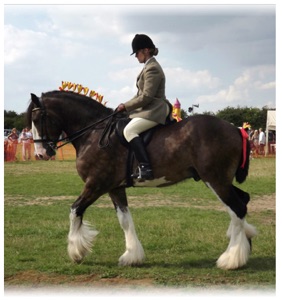
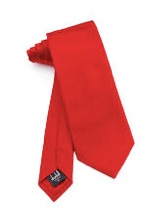
RULES
SHOWING GUIDELINES
EVENING PERFORMANCE
Competitors who qualify or take part in an evening performance may dress in hunting dress with tail coats or evening dress.
Ladies may wear black or blue hunting coat with hat with safety harness. Fawn breeches and black boots and garter straps.
Men may wear white breeches with top boots with black coats or coloured breeches and plain black boots.
Founder Members and Advisors
Roger & Fiona Clark, Wendy Toomer - Harlow, William Ireland, Terry Chalmers, Tweetie Nimmo
Website Administrator - Niki Pargeter